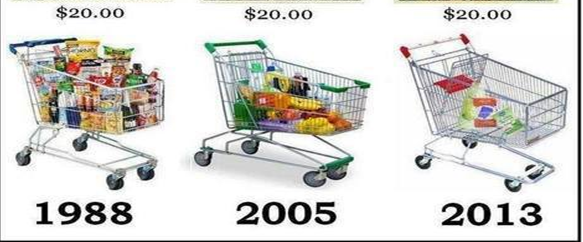
We talked about the problem of inflation last week. The picture above shows a good example of why inflation should be stopped. Somebody who had $20 in 1988 could just about feed their family for a week. I was married in 1988 and remember a food budget of $10.00 per week for my wife and myself. If they put that $20.00 in a jar, by 2013 that same $20.00 might just make a decent meal. This discourages people from saving and encourages spending.
How do we stop inflation? The best way is to slow or stop money creation. One the the best ways to do this is to create a system where money cannot be created out of thin air. Currently, money is primarily created out of thin air by two methods, deficit spending by governments and expansion of credit by the banking industry.
This wasn't always the case. Traditionally, paper money was a "note" or "IOU" statement that represented a real commodity. Gold and silver have been particularly popular. The $20 bill used to be redeemable for an ounce of gold. Currently, that ounce of gold can be traded for more than $1000. That is plenty of groceries. If money is tied to a commodity like gold or silver, in order to print more, you have to acquire more gold and silver. That stops inflation in two ways. The first is that it stops overprinting of money. The second is that even if money is overprinted, there is an underlying understanding as to what the money is worth. A $20 bill=an ounce of gold=two carts of groceries.
People correctly argue that there is now probably too much money to go back to the Gold Standard , However, there is no reason to not use a variety or Basket of Commodities . Although the value of some commodities change relative to others, this is usually a slower and less drastic process than how paper (or electronic) money with no backing changes value. An ounce of gold is still the same chunk of metal it has been for thousands of years. However, the value of a paper dollar relative to that metal changes by the second. I believe the biggest error people make is saying that the price of gold has changed. It should be said that the value of the dollar has changed.
We should make all paper or electronic money exchangeable for a real asset that can be touched. We should also require that any bank or government that creates more money should have to acquire more of that asset first. That way, the value of money will be stable and won't be manipulated by those in power for their own gain.

